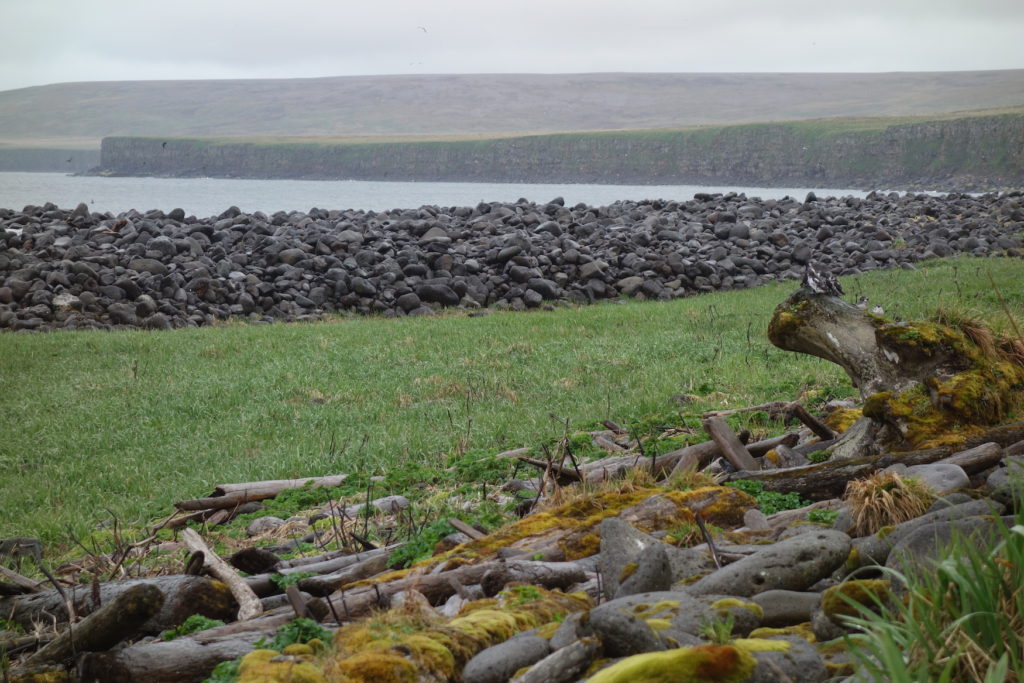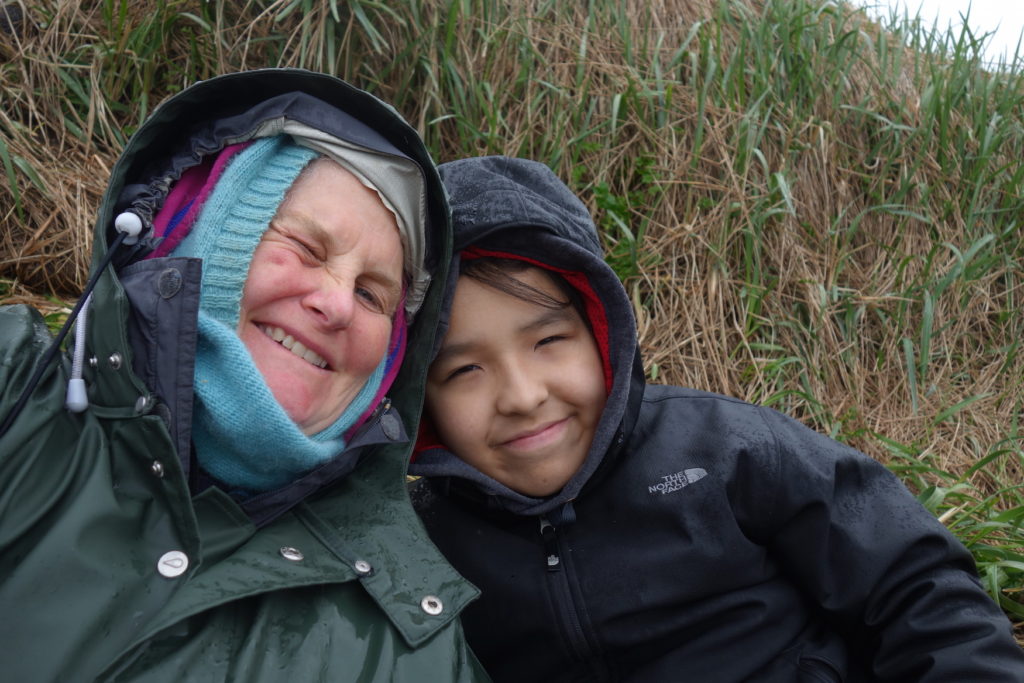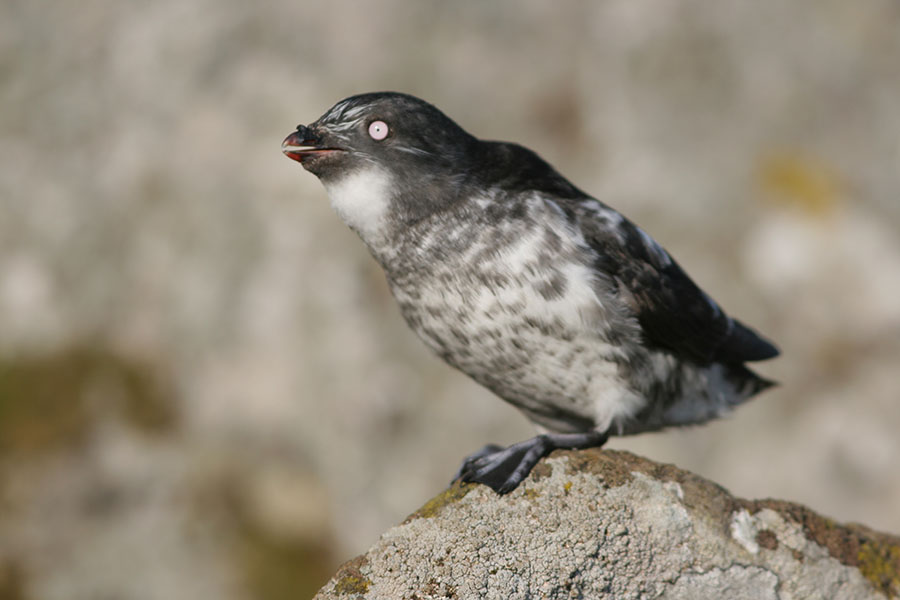Seabird biologists use the word “attendance” to describe the amount of time birds spend at the colony. Attendance data can provide insight into how the birds are doing during the breeding season. Time at the colony can be socially important for many seabird species, with time spent making and defending a nest-site, and finding a mate or spending time with an existing partner.
Shifts in numbers of birds across the breeding season can indicate events such as the start of incubation or chick-rearing, and even breeding failures. Attendance data can also indicate how much food is available locally. For examples, murre parents will spend less time at the colony if food is hard to find near the colony because of the additional time they need to spend foraging out at sea.
Least Auklets nest in crevices under rocks, and spend time on top of the rocks socializing. These birds are professional socializers; very busy and very loud!

Looking over to the Least Auklet colony at the harbor
Here on St. George, we’re interested in knowing what time of day numbers of Least Auklets at the colony are the highest. We’re hoping to map the extent of the breeding colony in the harbor this week, and will need to do this when the maximum numbers of birds are present so we can most accurately assess where they are breeding.
It was another wet and windy day. Karin started the watch, counting birds within our defined plot every 15 minutes. Ann and Cordell took over for a chunk of the morning stint. Unfortunately, Ann got sick and we had to bail on the remainder of the count.… but, we think we captured the main period of colony attendance.

Keeping warm and dry. Ann is 7 layers, Cordell in only three!
We took down the trail cams—lots of photos of rocks (the cameras work!), but few birds. We will need to deploy again on different sites.
We’re also realizing how challenging least auklets will be for the computer recognition program… unlike most seabirds, least auklets have very variable colors (some fairly dark, some with a lot more white on them), and rocks also change color depending on whether they are wet or dark….
Lots of feeding kittiwakes just off-shore while we were counting the auklets.
Again, not as we planned, but a good and realistic day in the field!

